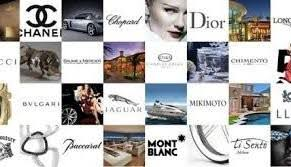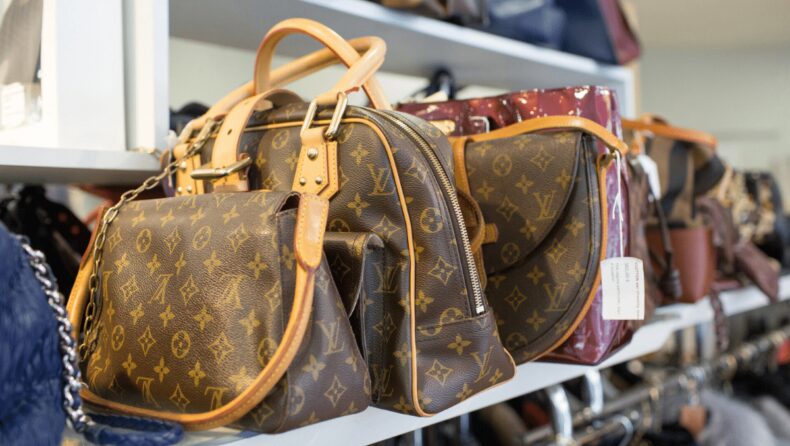LUXURY! What makes a luxury brand different from an everyday one?

What makes a luxury brand different from an everyday one? What is luxury? If you can’t readily answer this, then how can you tell anyone else why your brand is other? Luxury brand identity relies on a number of factors. You have to sell these factors to your customers just as much as the product itself.
“The change in how consumers define luxury and the new path to purchase is dramatically redefining the marketing strategy. Luxury brands must be very agile and innovative in order to gain the favors of the new luxury consumer.” -Forbes.com

WHAT IS LUXURY?
Luxury is hard to define; it’s expensive but not overpriced. It’s high-quality and long-lasting, but futuristic. It’s aesthetically pleasing but unique. It’s not only rare but also difficult to access. It’s service-minded but elitist. Luxury is a belief that relies upon elucidation.
How new consumer values are redefining the way we market luxury, believes there are 10 specific values that a brand must uphold in order to rightfully be named “luxury.”
The ten luxury brand values as defined by Danziger are
Superior performance
Craftsmanship
Exclusivity
Innovation
Sense of place & time
Sophistication & design aesthetic
Creative expression
Relevance
Heritage
Responsibility.
Here are the six key factors one must ponder to make a LUXURY BRAND or transform your brand into a luxury one.
1. PRICE
This is the simplest answer to, “What is luxury?” It also may be the least important one. The expense alone doesn’t form a luxury brand identity. Remember that people are far-readier to dismiss a brand as an overpriced version of what they’d buy otherwise. That doesn’t equate to luxury in their minds. You have to offer more. This is the most important point as to what makes a brand luxury.
2. QUALITY OF PRODUCTION

Now we’re getting somewhere. Luxury products will tend to do more, be made of higher-grade materials, and last longer than their competition. The touch of authentic craftsmanship is second to none for luxury brands. Customers desire products and services done by top professionals with the highest quality. This can often be immediately recognizable, which sets luxury brands apart. If any of these is disproved in your target customers’ minds, your brand’s perception can slip from “luxury” to “scam” overnight.
3. DESIGN AESTHETIC

Luxury is a statement of identity. It’s rarer, so being seen with a luxury brand identifies you in a way that’s separate from more common items. The look of a luxury item should communicate its stature and uniqueness. Customers long to identify with brands that celebrate their own sophistication with excellent design and aesthetics. The aesthetic a luxury brand presents should communicate the quality underlying it.
4. MEANING
Luxury has to be built on reality. Increased ability, better materials, and durability are all real. The price reflects the increased expense of incorporating these elements into a luxury product. The look is created to set these qualities apart in a distinctive way. These things are real.
Yet luxury is also a belief. Many luxury brands don’t succeed because they don’t get enough of their target market to believe in that brand’s meaning. What gives your luxury brand meaning that’s more enjoyable to a customer than the next luxury brand? They have to access some meaning through your brand that they can’t find elsewhere.
5. RARITY

Many beautiful, capable, and well-made products are viewed as very common because their brands make their profit through accessibility. They aren’t viewed as luxury items because they’re common and easy to own. The final component of a luxury product is its rarity. If it’s difficult to access or own, it’s luxurious. Some intricately designed products with decades of engineering aren’t luxury items because they’re numerous. And some rocks that come from the ground and do nothing but sit there are valuable because they’re rare.
6. SERVICE

Finally, no luxury brand identity can neglect the service element that backs its product. Few things will devalue your brand in the mind of a customer faster than having to talk to an automated system instead of a real person or waiting two weeks for a response to a complaint. The expense spent on luxury means that an element of high-quality service is expected.
This also creates a relationship between a customer and a brand. Brand loyalty comes from repeated positive experiences. Communication shouldn’t just occur when there’s something wrong. It should happen when everything’s right, to reinforce that everything’s right and there are more opportunities available for that to be reinforced.
Luxury customers spare no opportunity to lavish, and demand that the brands they support do the same—in a different way. Social and economic ethics are crucial to luxury customers and connecting with brands who feel the same. When a luxury brand owns its social responsibility, helps improve its communities, and does good in its industry, the customer can comfortably support the brand.
CONCLUSION

When aiming for luxury, there is no single sight on which to set your eye. Luxury is a feeling, a belief, a mindset, and a lifestyle. Luxury brands that rise above the rest must balance the line of serving their customers’ principles while creating something truly new and fascinating for them to desire, or rather, require. Luxury, at the end of the day, depends upon how a consumer’s relationship with a luxury brand makes them feel.
-HUMAIRA KHAN
Luxury Brand Educator
https://instagram.com/humairakhan20?igshid=YTY2NzY3YTc=
Read More:- Congress Leaders Protest After Portrait of Savarkar Is Unveiled In Assembly












